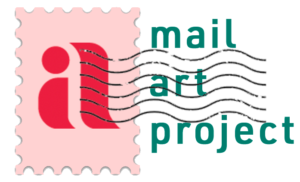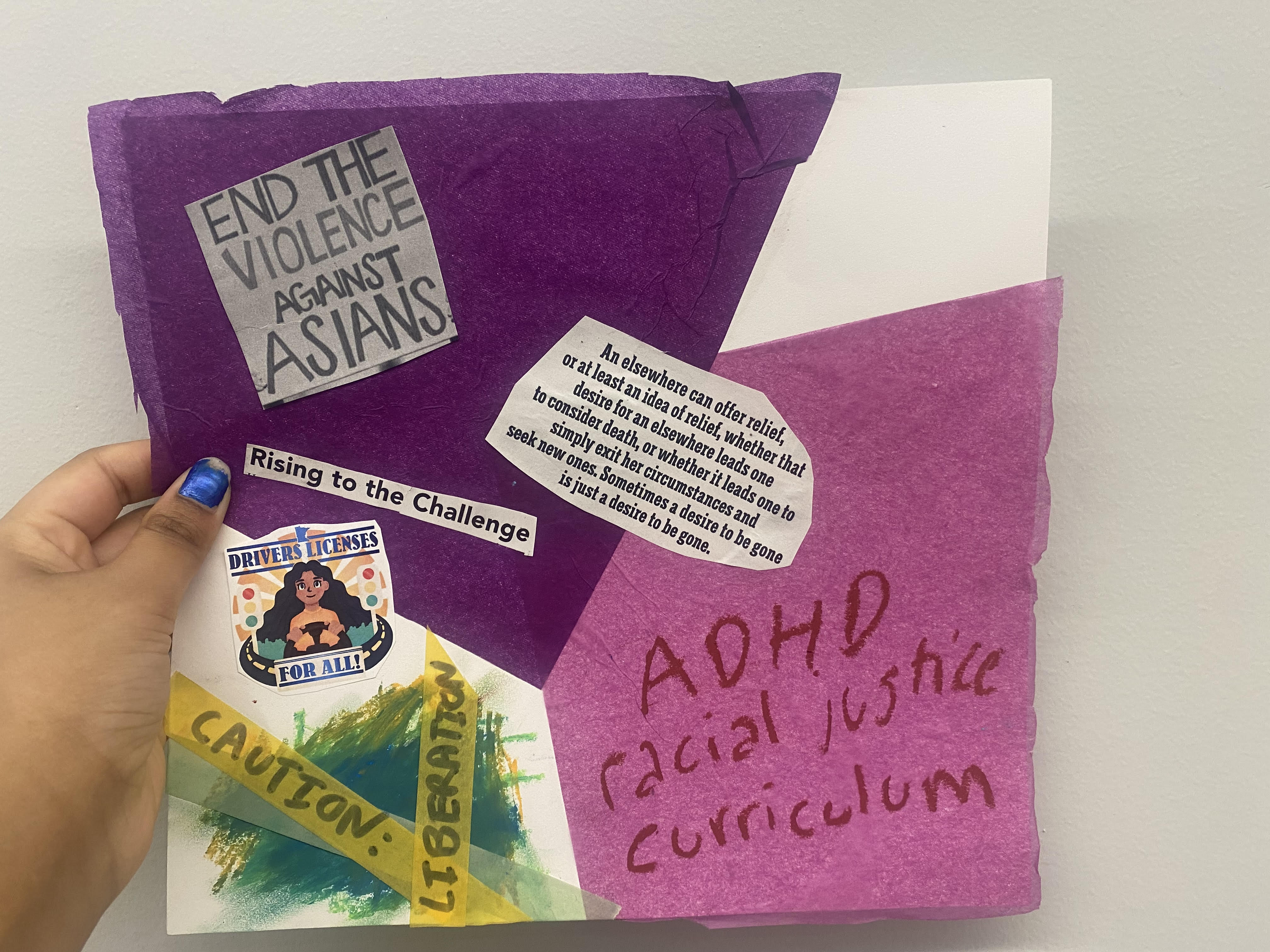Mer Mousoom (they/them)
The artwork is behind a backdrop of purple and pink geometric shapes. Plastered on top of the background, there is a graphic of a Latine woman driving with the caption: Drivers License for All. There are three other magazine quotes that are cut out and pasted: “Rising to the Challenge,” “End the Violence Against Asians” and “An elsewhere can offer relief, or at least an idea of relief, whether that desire for an elsewhere leads one to consider death, or whether it leads one to simply exit her circumstances and seek new ones. Sometimes a desire to be gone is just a desire to be gone.” In big font, the words “ADHD racial justice curriculum” is scrawled. There is a blue square colored with hints of yellow, and over it there is yellow tape crossing it with the words “Caution:” and “Liberation.”
My proposal is centered around the perspective of students of color with ADHD, and it holds special importance to me as an Asian American with ADHD. That is why I pasted the “End Violence Against Asians” because to me, ableism is violence towards Asians. For the quote about elsewhere, I was trying to imagine a world where students of color with ADHD did not have to struggle so much, made possible by an ADHD racial justice curriculum. I included the Drivers License for All logo because it was a project that I had worked on. I feel like documentation privilege is not something that is talked about enough in the Asian American community. Disability intersects in everything, and this stands as a reminder that solidarity is an important part of my work. The blue blob and the caution tape was an expression of my ADHD creativity and the liberation that would happen if students of color with ADHD were allowed to be themselves in academia. There isn’t a clear storyline because I believe in the multiverse: there are many different ways in which liberation for BIPOC Disability can happen. I wanted to do what I could with the materials available to me without printing out images, because racialized disability can be seen through everything. It’s important for me to create space for it specifically on this campus, but bringing disability in ethnic studies sources is realistically the way in which we can reach a broader audience for liberation. This artwork isn’t meant to be a vision, but rather a roadmap for a better and more inclusive future.

